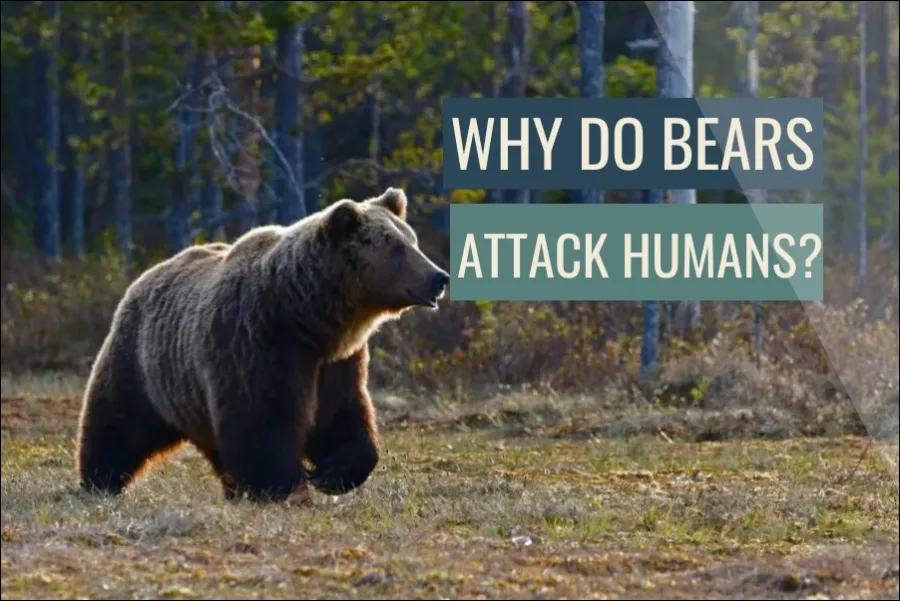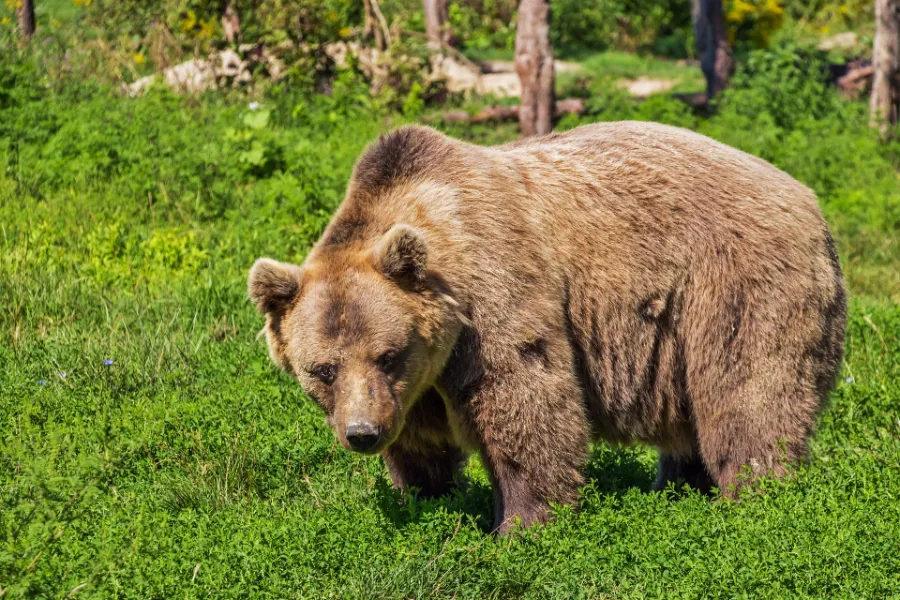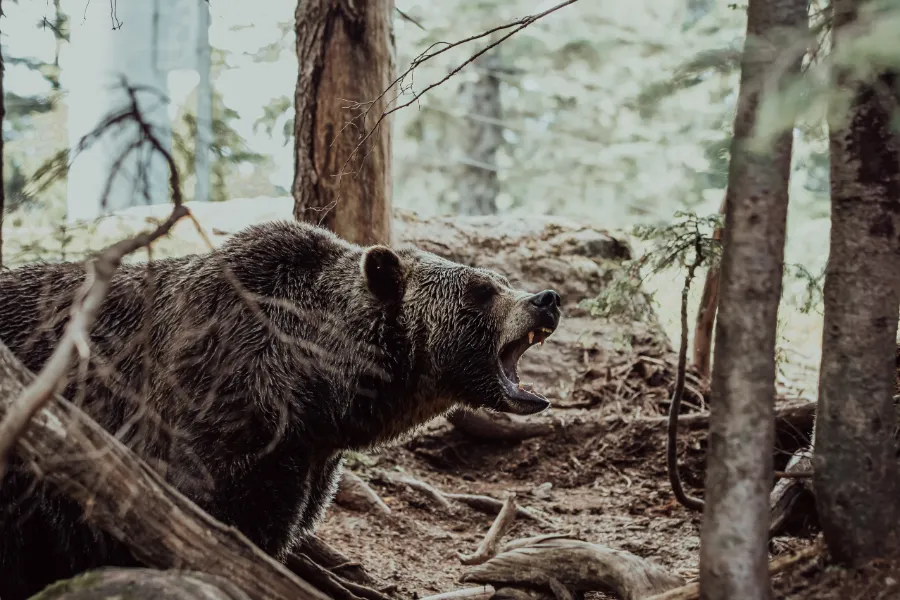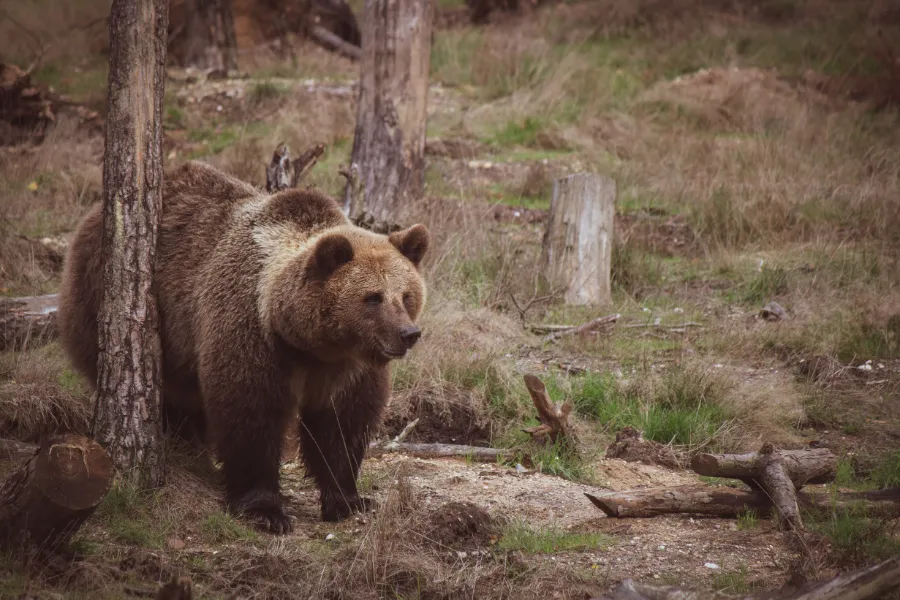
I was thinking the other day and realized that many people are curious about why bears might attack humans, especially since these incidents are not common. In this article, we will delve into the different circumstances that can lead to bear attacks and try to understand why they might occur.
Bears may attack humans if they feel threatened or provoked, such as coming too close to cubs or food, making loud noises or sudden movements, or approaching from behind. To avoid bear attacks, stay calm and move away slowly, avoiding eye contact and giving the bear an escape route.
In this article, we will deep further and try to explain multiple scenarios where bears attack humans and why they are so rare.
Why do bears attack humans?
Bears are large, powerful animals that can be dangerous if they feel threatened or provoked. While bears generally do not attack humans unless they are provoked, there are certain circumstances that can increase the likelihood of a bear attack.
One such circumstance is when bears have become accustomed to being fed by humans. When bears associate humans with food, they may lose their natural fear of humans and become more likely to approach people in search of a meal. This can be a dangerous situation, as bears are powerful and potentially dangerous animals. It is important to remember that feeding bears is illegal in many areas and can lead to dangerous or even deadly encounters between bears and humans.
There are several other things that can cause bears to feel threatened or provoked, including coming too close to a bear’s cubs or food, making loud noises or sudden movements, or approaching a bear from behind. It is important to respect a bear’s space and give them plenty of room to move away from you if they feel threatened.
If you do encounter a bear in the wild, it is important to stay calm and try to move away slowly and calmly. Avoid making eye contact with the bear, as this can be perceived as a sign of aggression. Make sure the bear has an escape route and do not block its path. If the bear does attack, try to protect your head and neck and fight back with any available objects.
It is also important to be aware of the different types of bear behavior and to recognize when a bear is feeling threatened or aggressive. Black bears and grizzly bears, for example, may exhibit different behaviors when they feel threatened. Black bears may make a series of huffs, blow air, or swat the ground with their front paws to warn you to back off. Grizzly bears, on the other hand, may stand upright on their hind legs to get a better look at you or to get a better sense of your size and intentions. Both of these behaviors should be taken as a warning and you should try to slowly and calmly move away from the bear.
Overall, it is important to remember that bears are wild animals and should be treated with caution and respect. By understanding the factors that can lead to bear attacks and taking steps to avoid them, you can reduce the risk of an encounter with a bear turning into a dangerous situation. It is also important to be aware of the different types of bear behavior and to recognize when a bear is feeling threatened or aggressive, so that you can respond appropriately and protect yourself.
🐻 Have you ever wondeered why bears fight each other? Read my article here.

Do bears attack humans unprovoked?
Bears generally do not attack humans unprovoked. In most cases, bears attack humans when they feel threatened or provoked in some way. There are several things that can cause a bear to feel threatened or provoked, including coming too close to a bear’s cubs or food, making loud noises or sudden movements, or approaching a bear from behind.
In some cases, bears may attack humans if they have become accustomed to being fed by humans, as this can lead them to associate humans with food and lose their natural fear of humans. This can be a dangerous situation, as bears are powerful and potentially dangerous animals. It is important to remember that feeding bears is illegal in many areas and can lead to dangerous or even deadly encounters between bears and humans.
Overall, it is important to remember that bears are wild animals and should be treated with caution and respect. If you encounter a bear in the wild, it is important to stay calm and try to move away from the bear slowly and calmly, avoiding eye contact and making sure the bear has an escape route. By following these guidelines and being aware of the factors that can lead to bear attacks, you can reduce the risk of an encounter with a bear turning into a dangerous situation.
🐻 Do you know if bears can swim? Learn more here.
How likely is a bear to attack a human?
The likelihood of a bear attacking a human depends on a number of factors, including the type of bear, the bear’s age and gender, the circumstances of the encounter, and the behavior of the person involved.
In general, bears are not naturally aggressive towards humans and attacks are relatively rare. However, bears may attack humans if they feel threatened or provoked in some way. There are several things that can cause a bear to feel threatened or provoked, including coming too close to a bear’s cubs or food, making loud noises or sudden movements, or approaching a bear from behind.
In some cases, bears may attack humans if they have become accustomed to being fed by humans, as this can lead them to associate humans with food and lose their natural fear of humans. This can be a dangerous situation, as bears are powerful and potentially dangerous animals. It is important to remember that feeding bears is illegal in many areas and can lead to dangerous or even deadly encounters between bears and humans.
Overall, it is important to remember that bears are wild animals and should be treated with caution and respect. If you encounter a bear in the wild, it is important to stay calm and try to move away from the bear slowly and calmly, avoiding eye contact and making sure the bear has an escape route. By following these guidelines and being aware of the factors that can lead to bear attacks, you can reduce the risk of an encounter with a bear turning into a dangerous situation.

💡 Wan’t to learn why bears growl? Read more here.
Do bears want to hurt humans?
Bears generally do not want to hurt humans and attacks are relatively rare. In most cases, bears attack humans when they feel threatened or provoked in some way. There are several things that can cause a bear to feel threatened or provoked, including coming too close to a bear’s cubs or food, making loud noises or sudden movements, or approaching a bear from behind.
In some cases, bears may attack humans if they have become accustomed to being fed by humans, as this can lead them to associate humans with food and lose their natural fear of humans. This can be a dangerous situation, as bears are powerful and potentially dangerous animals. It is important to remember that feeding bears is illegal in many areas and can lead to dangerous or even deadly encounters between bears and humans.
Bears are wild animals and they may act aggressively if they feel threatened or provoked. However, this does not mean that they actively want to hurt humans. Rather, they are simply responding to a perceived threat in the way that comes naturally to them.
Overall, it is important to remember that bears are wild animals and should be treated with caution and respect. If you encounter a bear in the wild, it is important to stay calm and try to move away from the bear slowly and calmly, avoiding eye contact and making sure the bear has an escape route. By following these guidelines and being aware of the factors that can lead to bear attacks, you can reduce the risk of an encounter with a bear turning into a dangerous situation.
🐻 Who’s the fastest bear? Learn more here.
Do some bears eat humans?
Bears generally do not eat humans, as humans are not a natural part of their diet. While bears are omnivorous and will eat a variety of plants and animals, their diet primarily consists of berries, fruits, nuts, roots, and insects. In some cases, bears may also eat small mammals, fish, and carrion.
In rare cases, bears may attack and eat humans if they feel threatened or provoked in some way. There are several things that can cause a bear to feel threatened or provoked, including coming too close to a bear’s cubs or food, making loud noises or sudden movements, or approaching a bear from behind.
It is important to remember that bears are wild animals and should be treated with caution and respect. If you encounter a bear in the wild, it is important to stay calm and try to move away from the bear slowly and calmly, avoiding eye contact and making sure the bear has an escape route. By following these guidelines and being aware of the factors that can lead to bear attacks, you can reduce the risk of an encounter with a bear turning into a dangerous situation.

In conclusion
Bears generally do not attack humans unless they feel threatened or provoked in some way. There are several things that can cause a bear to feel threatened or provoked, including coming too close to a bear’s cubs or food, making loud noises or sudden movements, or approaching a bear from behind. In some cases, bears may attack humans if they have become accustomed to being fed by humans, as this can lead them to associate humans with food and lose their natural fear of humans. This can be a dangerous situation, as bears are powerful and potentially dangerous animals. It is important to remember that feeding bears is illegal in many areas and can lead to dangerous or even deadly encounters between bears and humans. If you encounter a bear in the wild, it is important to stay calm and try to move away from the bear slowly and calmly, avoiding eye contact and making sure the bear has an escape route. By following these guidelines and being aware of the factors that can lead to bear attacks, you can reduce the risk of an encounter with a bear turning into a dangerous situation. It is also important to be aware of the different types of bear behavior and to recognize when a bear is feeling threatened or aggressive, so that you can respond appropriately and protect yourself.
